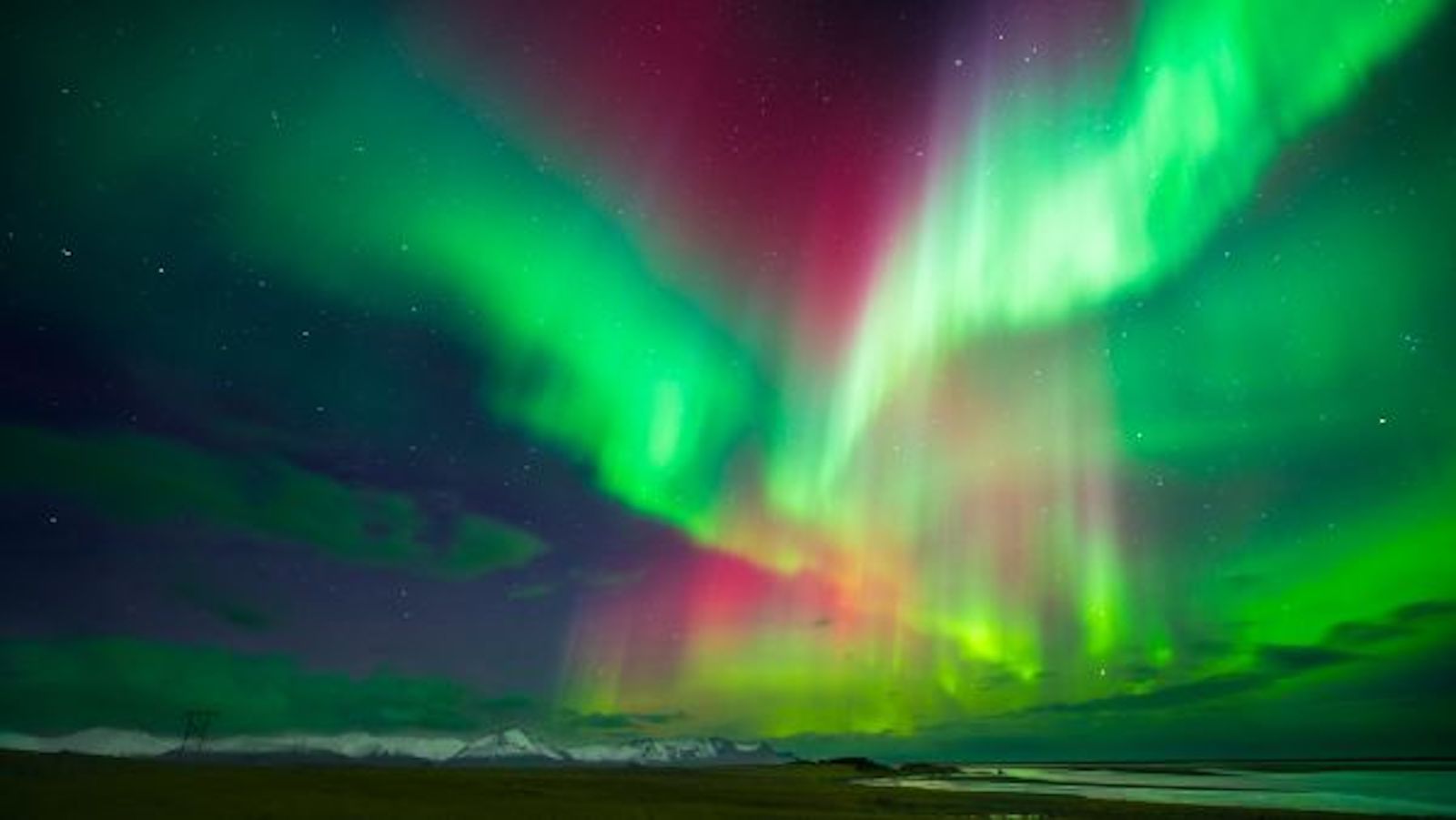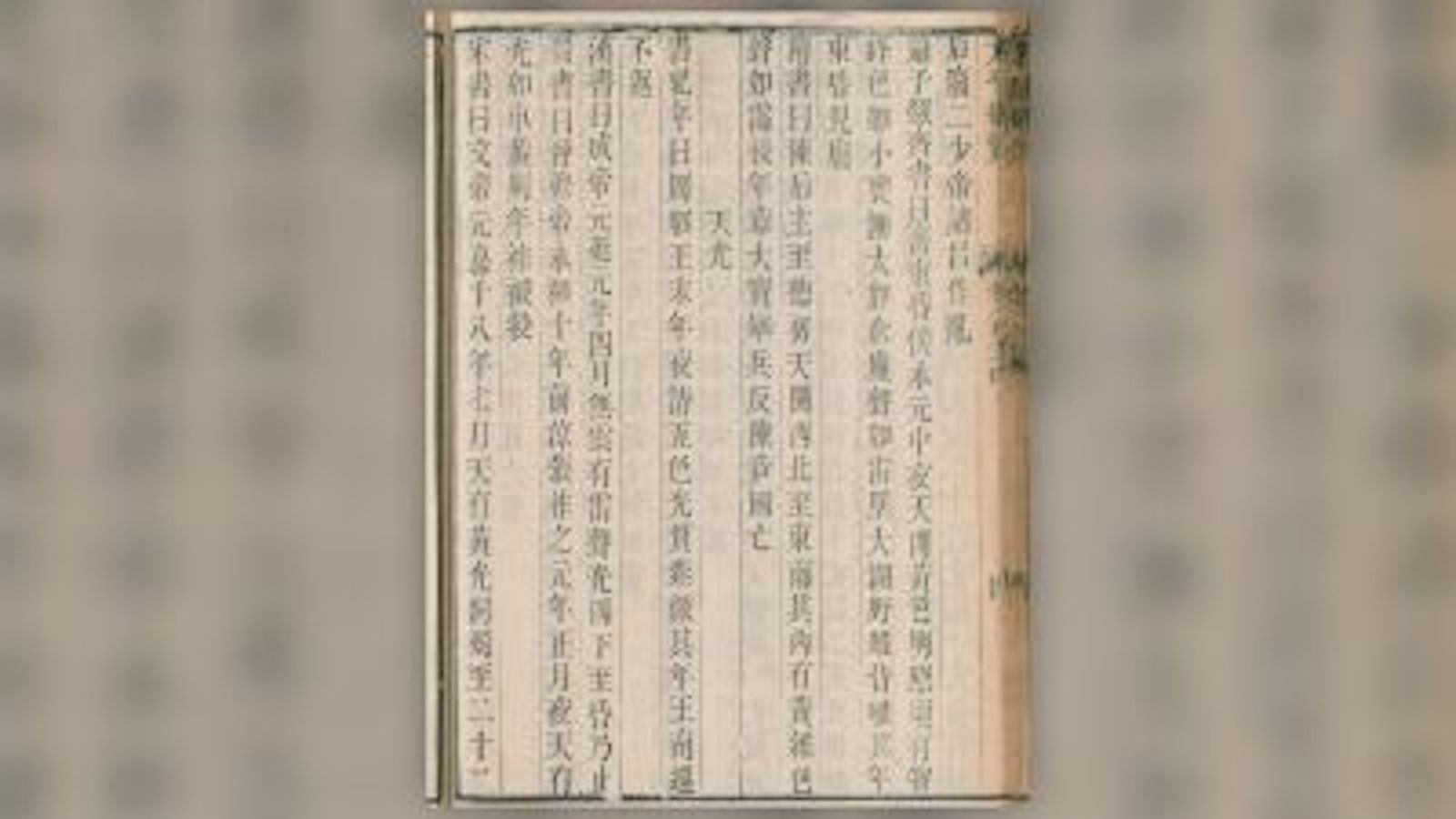Earliest documented aurora found in ancient Chinese text
The earliest documented case of an aurora, the fleeting but brilliantly colored lights that sometimes illuminate the night sky, dates to the early 10th century B.C., a new study on an ancient Chinese text reveals.
The text describes "five-colored light" witnessed in the northern part of the night sky toward the end of the reign of King Zhāo, the fourth king of the Chinese Zhou dynasty. The exact dates of Zhāo's reign aren't known, but it's likely that this "five-colored light" event happened in either 977 B.C. or 957 B.C., according to the study.
Researchers discovered this colorful detail in the Bamboo Annals (Zhúshū Jìnián in Mandarin), a fourth-century B.C. text written on bamboo slips that chronicled legendary and early Chinese history. Although scholars have been aware of the Bamboo Annals for some time, a fresh look at this particular section led to the realization that it detailed what might be the earliest described aurora, study corresponding author Hisashi Hayakawa, an assistant professor at the Institute for Space-Earth Environmental Research at Nagoya University in Japan and a visiting scientist in the Rutherford Appleton Laboratory in the U.K., told Live Science.
Related: People have long claimed to hear the northern lights. Are the reports true?
The newly analyzed "five-colored light" description likely refers to a geomagnetic storm, Hayakawa and study co-researcher Marinus Anthony van der Sluijs, an independent researcher based in Canada, reported in the study. Geomagnetic storms occur when the sun — a "breathing ball of gas" — belches out solar flares, or ginormous bubbles of electrified gas that travel at high speeds through space, according to NASA.
Earth's magnetosphere usually protects the planet from the sun's energetic charged particles, but sometimes these particles get through and cause magnetic disturbances, known as geomagnetic storms. Such storms can produce beautiful lights — oxygen glows green and red, whereas nitrogen gives off blue and purple light, NASA reported.
Nowadays, the northern lights, the aurora borealis, occur at northern latitudes, while the southern lights, or aurora australis, happen at southern latitudes. But during the mid-10th century B.C., Earth's north magnetic pole inclined toward the Eurasian continents, at about 15 degrees closer to central China than it does today. As a result, it's possible that ancient people in central China — possibly as far south as 40 degrees latitude, or just north of Beijing — could have seen geomagnetic storms and the colorful lights they produced, the researchers said.
Breaking space news, the latest updates on rocket launches, skywatching events and more!
Mid-latitude auroras can present multiple colors when they are bright enough, which could explain why the celestial event was noted as "five-colored light," the researchers added. For example, in October 1847, a colorful auroral display was observed in the United Kingdom, Hayakawa told Live Science. According to a report near Cambridge, England, "a crown was formed near the magnetic zenith, from which all the rays appeared to diverge; their colours were most splendid and of peculiar transparency, especially the red and green, the former being quite like carmine, and the latter that of the pale emerald; the central part of this canopy, or that near the magnetic North, was of a very yellow colour, one streamer being quite like gold."
Hayakawa called this possible record-setting event a "candidate aurora," as the team doesn't have enough evidence to confirm an aurora. Previously, the oldest candidate auroras were records inscribed by Assyrian astronomers on cuneiform tablets, which dated to between 679 B.C. and 655 B.C., according to a 2019 study by Hayakawa and colleagues published in the The Astrophysical Journal Letters.
The latest finding took so long to be recognized for several reasons, Hayakawa noted. The original manuscript of the Bamboo Annals was lost, rediscovered in the third century A.D. and then lost again during the Song dynasty (A.D. 960 to 1276). During the 16th century, a translation used the word "comet" rather than "five-colored light." Now, the new study sets the record straight, the researchers wrote.
Documenting candidate auroras is useful, as it can help scientists model long-term patterns of space weather and solar activity, the team said.
The study was published online Jan. 17 in the journal Advances in Space Research.
Originally published on Live Science.

Laura is an editor at Live Science. She edits Life's Little Mysteries and reports on general science, including archaeology and animals. Her work has appeared in The New York Times, Scholastic, Popular Science and Spectrum, a site on autism research. She has won multiple awards from the Society of Professional Journalists and the Washington Newspaper Publishers Association for her reporting at a weekly newspaper near Seattle. Laura holds a bachelor's degree in English literature and psychology from Washington University in St. Louis and an advanced certificate in science writing from NYU.



